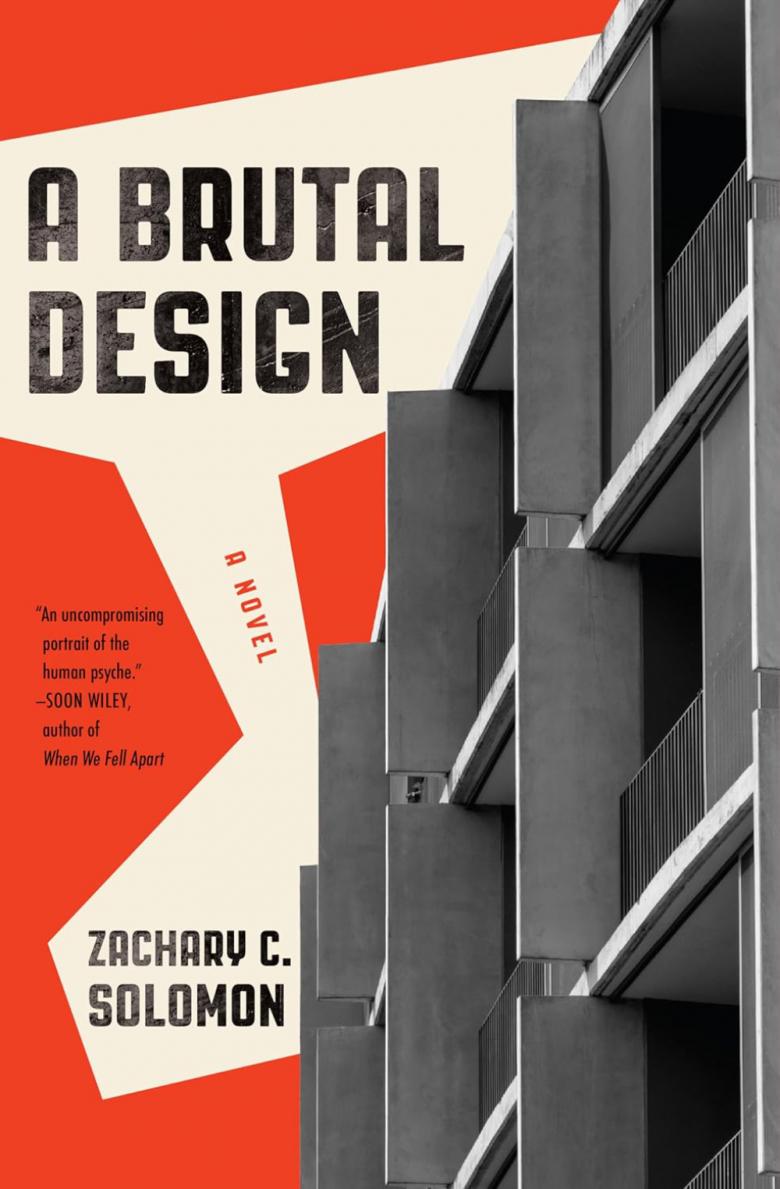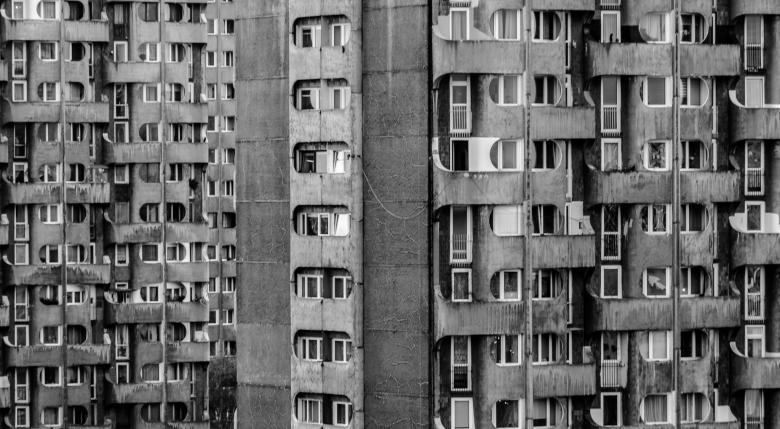Building Novels
‘A Brutal Design’: A Meditation on Cruelty in our New Century
The latest installment in Madeline Beach Carey's “Building Novels” series, which looks at works of fiction where buildings and architecture play integral roles, is Zachary C. Solomon's first novel, A Brutal Design, whose protagonist is an architecture student and which is set in an experimental utopian city.
Zachary C. Solomon’s debut novel, A Brutal Design is set in a placed called Duma. Duma, an experimental Socialist city in the desert hosts refugees from other hollowed-out, haunted geographies. Here people are running from war, from fascism, from violences that echo both the realities of the mid-twentieth century but also so many of the humanitarian crises unfolding today.
The novel’s protagonist, Samuel Zelnik, is a graduate student in architecture who has chosen this mysterious city in the desert over the alternative of a “gulag.” It’s unclear exactly where or when the novel is set, but the mood feels Soviet. All of this might sound a little too derivative of much twentieth-century Eastern European absurdist literature, however, Solomon’s crisp, discerning prose keeps the reader engaged in what can at times feel like an overly ambitious political fable. Solomon has written a philosophical novel that works not because the author is a great philosopher but rather because he’s an excellent writer at the sentence level.
While much of the plotting comes across as overly blunt and sometimes too heavy on allegory, the novel’s imagery provide the beauty and sensibility that keep the reader interested in Zelnik’s journey: “I stood to the side, away from the rest of the travelers, breathing the sandy air and waiting for the porter to emerge by the train’s sleek, streamlined beak.”
Even the gloomier passages bloom with carefully rendered, tender, touching detail:
The novel, published in 2024, but written in a mid-twentieth century, slightly old-fashioned style, is constantly evoking ghosts of the past century but also teasing the reader with echoes of current headlines and warnings about the rise of fascism, new and more virulent forms of antisemitism, and of course the unrelenting slaughter of civilians in Gaza, the West Bank, and Lebanon. The imagery in the last half of the novel must have once felt experimental, but in late 2024 they feel eerily familiar:
In A Brutal Design, Samuel, a Jewish student of architecture, is mourning the recent murder of his parents, and also exploring the strange, abusive relationship he has with the uncle who raised him. He has been invited to help work on the design of this utopian experiment: Duma. But upon arrival — by train, which is of course terribly disconcerting — he begins to encounter the brutality of utopian structures: both architectural and human. Intrigued by Duma’s dramatic architecture, but perplexed by the behavior of the other residents, Samuel sets out to find that long-lost, seemingly sinister uncle who emigrated to the city years before. Along the way he meets Miriana, an avant-garde artist whose memorial installations hidden throughout the city attract and terrify him. Slowly, but surely, Samuel begins to discover that utopia is as brutal as the place he left behind and that design can be both revelatory and deadly. Perhaps the tragedy of the book is that instead of coming off as absurdist or futuristic, the horror feels too close to our everyday. It seems to young Samuel that the foundation of any city-state is brutality and the novel poses a direct, thunderous question: are artists and architects as darkly evil as dictators?
Brutalist architecture acts as a sort of decoration throughout this novel that struggles with the question of how humanism can become fascism, and collective hope can convert into collective annihilation. While the subject matter is dark and the overarching thesis is in many ways devastating, the novel works because it embraces such intriguing and age-old questions: is there humanity without cruelty, creativity without violence? Can a state care for its people without destroying others?

A Brutal Design
Zachary C. Solomon
5-1/4 x 8"
264 Páginas
Paperback
ISBN 9781941360811
Lanternfish Press
Purchase this book



